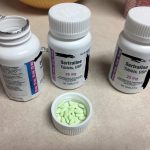10 Signs of Pseudoaddiction You Should Know

What is Pseudoaddiction?
Pseudoaddiction is a term that was first coined by David Weissman in 1989 to describe a phenomenon often observed in patients with chronic pain who exhibit drug-seeking behaviors. It refers to a condition in which a patient appears to be displaying signs of addiction, such as drug-seeking behaviors, but is actually experiencing undertreated or untreated pain.
The underlying concept of pseudoaddiction is that when a person experiences inadequate pain management, they may engage in behaviors that resemble addictive behavior in an attempt to obtain relief from their pain. These behaviors can include requesting increased doses of pain medication, seeking prescriptions from multiple doctors, or even turning to illegal sources to obtain pain relief.
Pseudoaddiction can be misinterpreted as a true addiction, leading to inappropriate labeling of patients and inadequate pain management. It is essential for healthcare providers to distinguish between the two and recognize the possibility of undertreated pain as the cause of the observed behaviors.
Pseudoaddiction Vs Addiction
The key difference between true addiction and pseudoaddiction is that in pseudoaddiction, the patient’s drug-seeking behaviors are driven by uncontrolled pain rather than a psychological or physiological dependence on the medication. Once the pain is adequately managed, the drug-seeking behaviors typically resolve, distinguishing it from true addiction where the compulsive drug-seeking behavior continues despite pain relief.
Recognizing and addressing pseudoaddiction requires open communication and a comprehensive assessment of the patient’s pain management needs. This may involve reassessing the adequacy of pain relief, considering alternative pain management strategies, and providing appropriate education and support to the patient.
It’s important to note that pseudoaddiction is a controversial concept, and some experts argue that the term may not accurately reflect the underlying issues. The understanding and treatment of pain and addiction have evolved since the term was first introduced, and healthcare providers now focus on a more holistic approach that considers the complex interplay between pain, mental health, and addiction.
Signs of Pseudoaddiction
There are certain signs or behaviors that may be indicative of pseudoaddiction. Here are 10 signs that have been associated with pseudoaddiction:
1. Drug-seeking behavior: The individual may engage in behaviors such as repeatedly requesting increased doses of medication, seeking prescriptions from multiple doctors, or attempting to obtain medication through illegal means. These behaviors are driven by the need to alleviate their uncontrolled pain rather than a desire for the euphoric effects or psychological dependence associated with addiction.
2. Agitation and irritability: When a person’s pain is not adequately relieved, they may become frustrated, agitated, or irritable. These emotional responses are a result of their ongoing discomfort and desperation to find effective pain relief.
3. Preoccupation with pain relief: Individuals experiencing pseudoaddiction may constantly think about and focus on finding ways to alleviate their pain. This preoccupation with pain relief reflects their intense desire to find effective treatment and regain a sense of well-being.
4. Doctor shopping: Doctor shopping involves seeking multiple healthcare providers in an attempt to obtain more medication or increase the dosage. Individuals with pseudoaddiction may resort to this behavior due to their genuine belief that they require higher doses of medication to adequately manage their pain.
5. Time-consuming efforts to obtain medication: The person may invest significant time and effort into acquiring medication. This can include visiting multiple pharmacies, emergency departments, or clinics to ensure a steady supply of pain medication. Their focus is primarily on ensuring that they have access to the medication they believe will provide relief.
6. Heightened anxiety around medication supply: Individuals experiencing pseudoaddiction may worry excessively about running out of medication or experiencing a delay in obtaining a prescription refill. The fear of being without medication stems from their dependency on it to manage their pain and maintain a tolerable level of functioning.
7. Normal functioning between doses: Unlike individuals with true addiction, those with pseudoaddiction typically function relatively normally when their pain is adequately managed. They do not exhibit compulsive drug-seeking behaviors outside the context of seeking pain relief.
8. Absence of drug tolerance or withdrawal symptoms: Pseudoaddiction is characterized by a lack of physiological tolerance or withdrawal symptoms when the medication is reduced or discontinued. Unlike individuals with true addiction, they do not require increasing doses to achieve the same level of pain relief, nor do they experience withdrawal symptoms when the medication is appropriately adjusted or stopped.
9. Compliance with a treatment plan: Individuals experiencing pseudoaddiction generally adhere to the prescribed treatment plan and follow the instructions provided by healthcare professionals. They genuinely believe that the medication is necessary for pain management and follow the recommended guidelines accordingly.
10. Resolution of drug-seeking behavior with adequate pain management: When the underlying pain is effectively treated, the drug-seeking behaviors associated with pseudoaddiction typically diminish or disappear. This is a crucial distinction from true addiction, where the compulsive drug-seeking behavior continues despite pain relief or even in the absence of pain.
It’s important to note that these signs are not definitive proof of pseudoaddiction, and a comprehensive evaluation by a healthcare professional is necessary to determine the underlying cause of the observed behaviors.
How to Overcome Pseudoaddiction
Overcoming pseudoaddiction involves addressing the underlying issue of undertreated or untreated pain. Here are some strategies that can help in managing and resolving pseudoaddiction:
1. Open communication: It is important to have open and honest communication with your healthcare provider about your pain levels, concerns, and treatment options. Discuss your pain management goals and any difficulties you may be experiencing in achieving adequate relief.
2. Pain assessment and treatment adjustment: Work with your healthcare provider to reassess your pain levels and evaluate the effectiveness of your current pain management plan. It may be necessary to adjust medication dosages, try different types of pain medication, or explore alternative pain management techniques to achieve better pain control.
3. Pain management alternatives: Explore non-medication approaches to pain management, such as physical therapy, occupational therapy, acupuncture, mindfulness techniques, relaxation exercises, or cognitive-behavioral therapy. These approaches can complement medication-based treatments and provide additional pain relief.
4. Education and support: Seek education and support resources related to pain management. This can involve learning about the nature of pain, understanding the difference between addiction and pseudoaddiction, and finding support groups or counseling services that can provide guidance and reassurance.
5. Collaborative care: Consider involving a multidisciplinary team in your pain management. This may include your primary care physician, pain management specialist, physical therapist, psychologist, or other healthcare professionals. Collaborative care can help provide a comprehensive approach to addressing both the physical and psychological aspects of your pain.
6. Psychological support: Pain can have a significant impact on mental well-being. Consider seeking counseling or therapy to address any emotional distress, anxiety, or depression that may arise from dealing with chronic pain. A mental health professional can help you develop coping strategies and provide support throughout your pain management journey.
7. Regular follow-ups: Schedule regular follow-up appointments with your healthcare provider to assess your progress, address any concerns or challenges, and make necessary adjustments to your pain management plan. Ongoing monitoring and communication are essential for optimal pain control.
Remember, overcoming pseudoaddiction requires a collaborative effort between you and your healthcare provider. By working together, you can develop a tailored pain management plan that addresses your needs and helps you regain control over your pain without resorting to drug-seeking behaviors.





